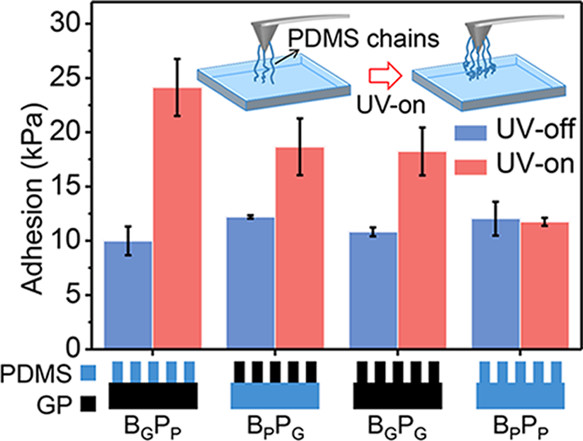X. Wang, D. Tan, S.Q. Hu, Q. Li, B.S. Yang, Z.K. Shi, R. Das, X.L. Xu, Z.-S. Wu, L.J. Xue*
ACS Applied Materials & Interfaces, 2019, 11(49), 46337-46343.
DOI:10.1021/acsami.9b14940[PDF]

Bio-inspired reversible adhesives have attracted great attention due to their promising applications in the electronic, biomedical and robotic fields. Here, to achieve in-situ reversible adhesion, a new concept is demonstrated by modulating the conformations of polydimethylsiloxane (PDMS) chains. The new adhesive, termed BGPP, is composed of graphene/PDMS composite (GP) as the backing layer and PDMS as the micropillar array. The photothermal effect of graphene under UV irradiation heats up the micropillars, results in an increase in the chain conformations of PDMS and thus the contact points with counterpart surface. The more contact points in together with the alignment of PDMS chains during shearing result in an adhesion much higher than that without UV irradiation. The adhesion switching thus doesn’t rely on the changing of contact area so that the macroscopic deformation of structures is avoided. The results suggest a new design principle for light controllable structured adhesive, which could be conceptualized into other rubbery materials.